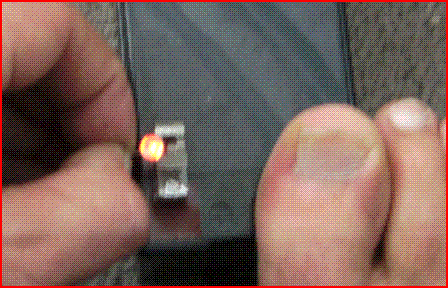Just a thought.
60uA is going to make x amout of light per LED.
Lots of voltage available.
Series a whole slew of water clear extra super duper red LEDs.
Can see that from a LONG ways!
Pretty much the same idea as what I did here. When ringing at night, it lights up the front of the house 75 yards away. I can't recall, and don't have the sketches handy, but seems the whole circuit uses 1mA?
http://ghurd.info/amish_flasher.htmlNot sure how many amps flow through me, but same LED as above, me as the resistor, left hand to right toe.
Water clear LED. The red is light.
A dozen of those would be easy to see from a distance.
G-

(edits)
I do not belive the reflector is needed with regular 5mm 20 degree LEDs because the reflector is built in. 20 degrees would be better than a wide angle LED array with a still wide angle reflector. In this situation candela is more important than lumens.
E-daddy1's comments are valid, I think. There must be some kind of minnow in the paddies, eating fish make fertilizer. Fish farms hang bug zappers over the water to feed the fish.
Wow, "With a 1uF filter cap the LED would ghost for over ten seconds after power was removed".
And oops, sorry, I missed "A red LED string might be more efficient". Agreed. Water clear red would be best.